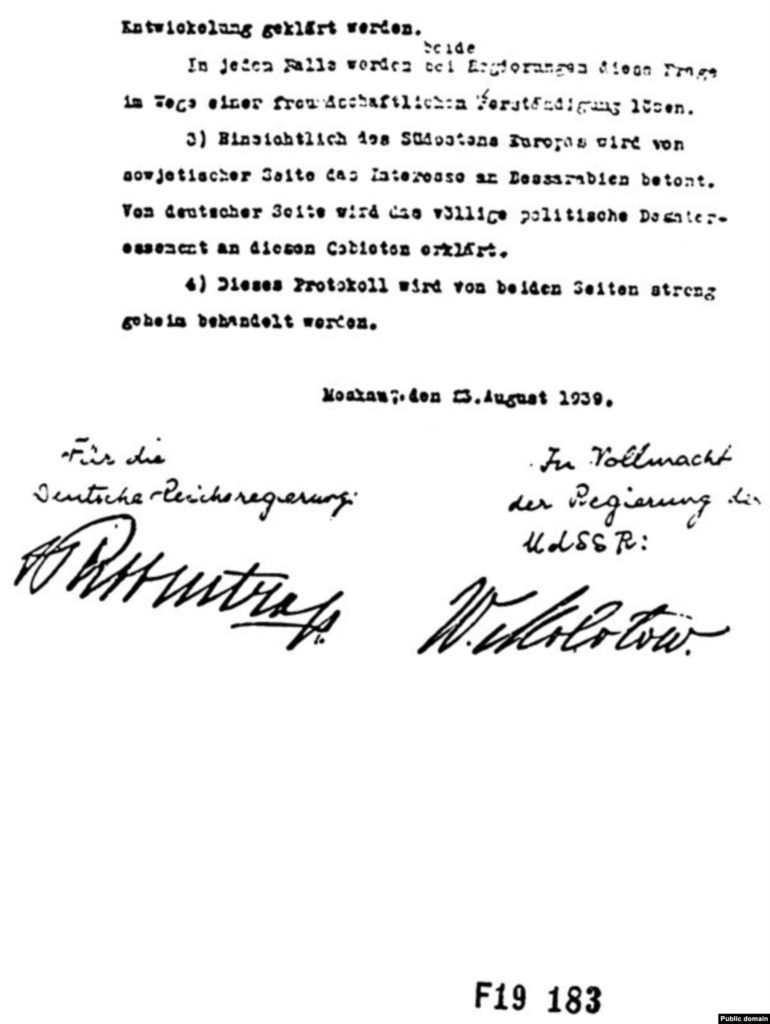
We mark the completion on December 27, 1941 – an even 80 years ago today – of Dmitri Shostakovich’s Symphony No. 7, the so-called “Leningrad Symphony.” He had begun the symphony at home in Leningrad but completed it in Kuybishev, a city today known by its original name as Samara. Located on the Volga River just west of the Ural Mountains, Kuybishev-slash-Samara was one of a number of “safe havens” set up by the Soviet government to protect its intelligentsia from the invading Nazi hordes.
Background: With Friends Like These . . .
On August 23, 1939, Joseph Stalin’s Soviet government signed a pact of nonaggression and friendship with Adolf Hitler’s Germany. In a secret protocol, among other things, it was agreed that the Soviet Union and Germany would, between them slice ‘n’ dice and then gobble up Poland; and that the Baltic States of Latvia, Lithuania, and Estonia would stay within the Soviet sphere of influence. In return, Stalin pledged to stay out of any war between Germany and any of the Western democracies.

And so the Stalinist demon sold its soul to the Hitlerian devil. The pact stunned the world. Russia and Germany – the two great continental powers of Europe – had never trusted one another. And now, two of the most militant, malignant, psychotic sociopaths in history – Hitler (1889-1945) and Stalin (1878-1953) – representing the two most oppositional ideologies of the twentieth century had figuratively shoved their tongues down each others’ gullets. As an immediate result, Hitler’s war – as the Soviet’s often called it – was able to begin. Nine days after the signing, his eastern flank secure, Hitler was free to begin his war of “expansion” and Germany invaded Poland. Two days later – on September 3, 1939 – Great Britain and France, honoring treaty obligations with Poland, declared war on Germany. And thus began the European phase of World War Two.
It is no small irony that in many ways, Nazism and Stalinism represented two sides of the same coin. Both Nazism and Stalinism were rooted in a cult of personality, based on the infallible actions of a single leader with total authority. Both systems employed a small ruling elite and a single ruling party to push forward their agendas. Both systems were atheistic, admitting no higher authority than the great leader himself, and both systems sought to do away with traditional notions regarding good and evil. Both systems sought to destroy the old world and create in its place a new international order based on its own “utopian” vision. …
Continue reading, only on Patreon!
Become a Patron!Listen on the Music History Monday Podcast
Podcast: Play in new window
Subscribe: Apple Podcasts | Spotify | Pandora | iHeartRadio | RSS | More
